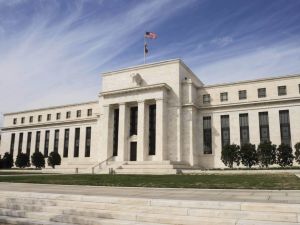With the announcement of further quantitative easing, Draghi commits further to his “Whatever it takes” policy.
Last December financial markets were disappointed by the lack of actions announced by the European Central Bank (ECB). Equity markets triggered the bearish markets at the start of this year.
Now it seems that the ECB Governor has learnt his lesson. The 25 members of the Executive Council voted for a stimulus package that is definitively the most ambitious easing in monetary policy ever implemented by the ECB. This is what Draghi announced yesterday:
- The interest rate on the main refinancing operations will be decreased by 5 basis points to 0.00%, starting from the operation to be settled from 16 March 2016.
- The deposit facility interest rate will be decreased by 10 basis points to -0.40%.
- The interest rate on the marginal lending facility (a standing facility of the Euro system which counterparties may use to receive overnight credit from a national central bank at a pre-specified interest rate against eligible assets) will be decreased by 5 basis points to 0.25%, with effect from 16 March 2016.
- The monthly purchases under the asset purchase programme will be expanded from €60 billion to €80 billion starting in April.
- Investment grade euro-denominated bonds issued by non-bank corporations established in the euro area will be included in the list of assets that are eligible for regular purchases.
- A new series of four targeted longer-term refinancing operations (TLTRO II), each with a maturity of four years, will be launched, starting in June 2016.
The package measures are impressive and in the first hours the financial markets welcomed the decision. Some journalists asked Draghi if the ECB was overreacting, the ECB governor replied that economic conditions had worsened since the last meeting. Some argued that central banks were running out of ammunition, but Draghi said that teh ECB’s latest decision is evidence that they have not.
What prompted the ECB to such a strong action? Latest releases on the Consumer Price Index (CPI) have played an important role; last week we saw Eurozone inflation printing negative. Forecasts made by the ECB on inflation have been revised down: for 2016 the inflation is expected to be close to 0% (0.1%), down from the previous estimates of 1%. CPI growth is expected to be 1.3% in 2017 and 1.6% in 2018. Forecasts for GDP growth have been revised down: the economy is expected to grow by 1.4% in 2016 (the previous estimate was 1.7%) and at by 1.7% in 2017 (previous estimate was 1.9%).
One doubt still remains. Yesterday’s announcement represents a further commitment to a “Whatever it takes policy”, this was announced by Draghi in a speech in July 2012, when the Eurozone was in trouble. What investors cannot get out of their mind is that stronger and stronger policies imply the problem is yet to be resolved and monetary policy may be losing effectiveness; the question is, when will it be ineffective. This reasoning could explain why markets, after welcoming the news, pulled back a few hours later. Equity markets were back to pre- announcement levels and the Euro was stronger by market close. Without a commitment from local governments to implement virtuous fiscal policies and structural reforms, it could be that monetary policy will lose traction effect.
During these periods MoneyFarm remain committed to it’s strategy, using diversification to better take advantage of good opportunities in equity, fixed income, commodity and foreign exchange markets. We strongly believe that the ECB move will have a positive impact on fixed income and equity markets in the medium to long term, but it is hard to be sure which asset classes will benefit the most. Risky assets (equity and corporate bonds) could find a new support in demand, and this should confirm some of the themes we introduced at the beginning of 2016: the importance of being invested in High Yield corporate bond, in peripheral European country bonds and in European equity markets.
We think that this historical period represents a buying opportunity, but asset allocation is very important for delivering a positive return in the medium–long term. Draghi showed us that monetary policy in Europe still has the tools to face economic uncertainty. Short term volatility should be faced with a sound macroeconomic approach, which carefully monitors and evaluates fundamentals, something that we do every day and that we try to express with our investment choices.





